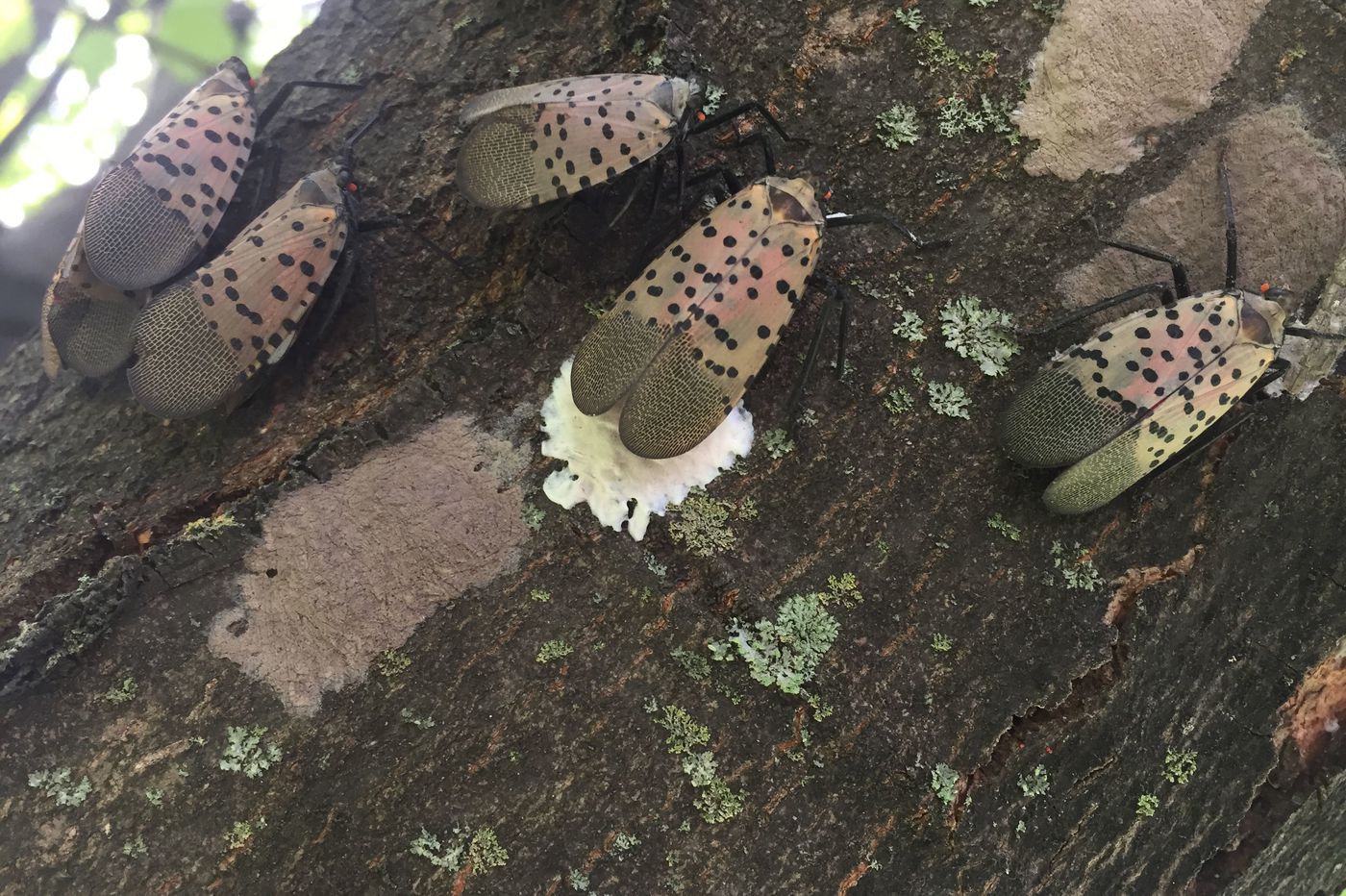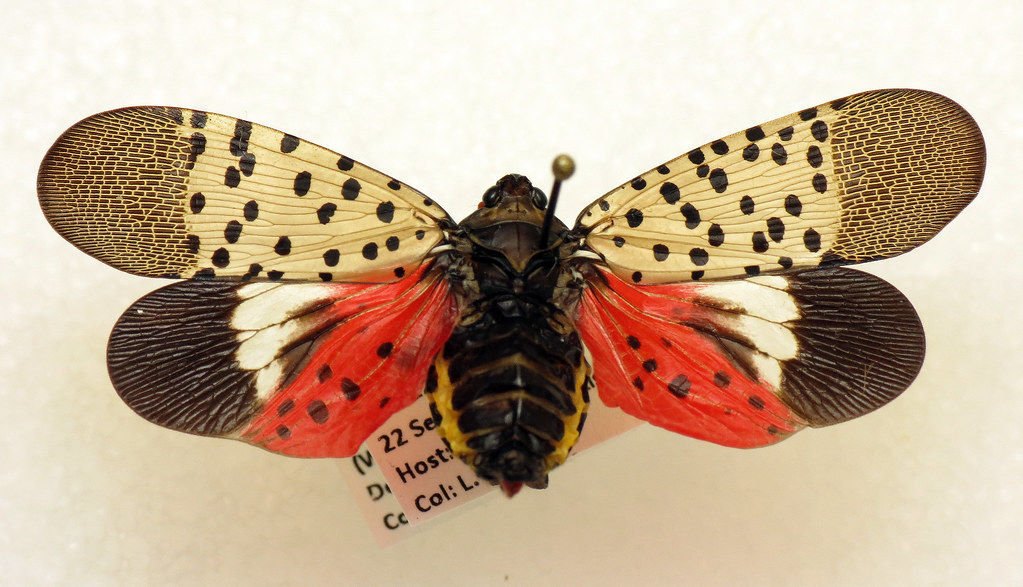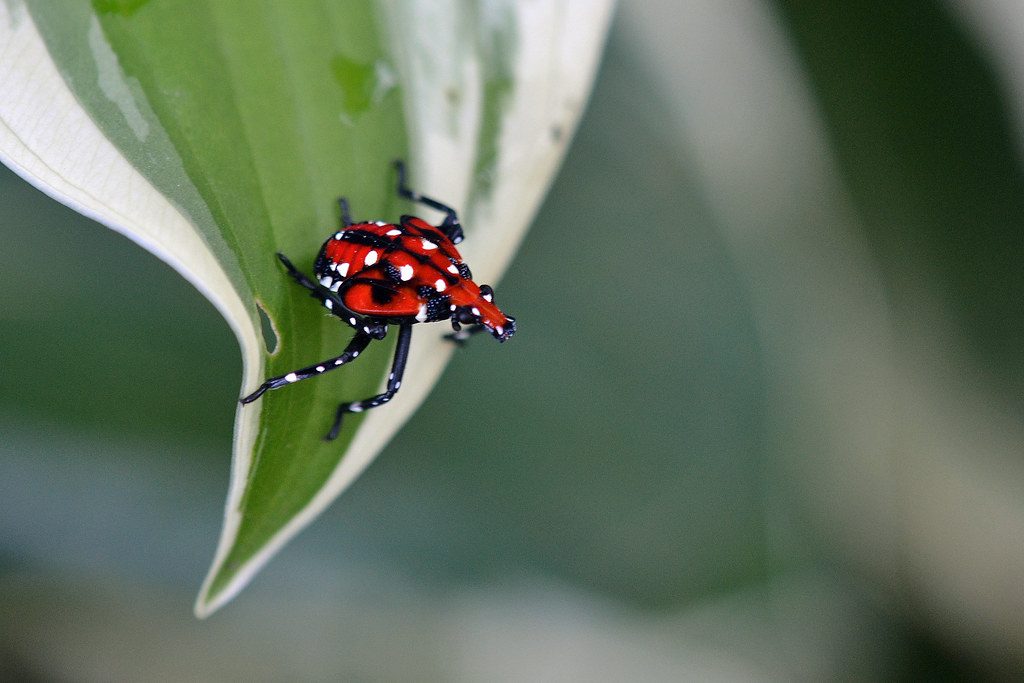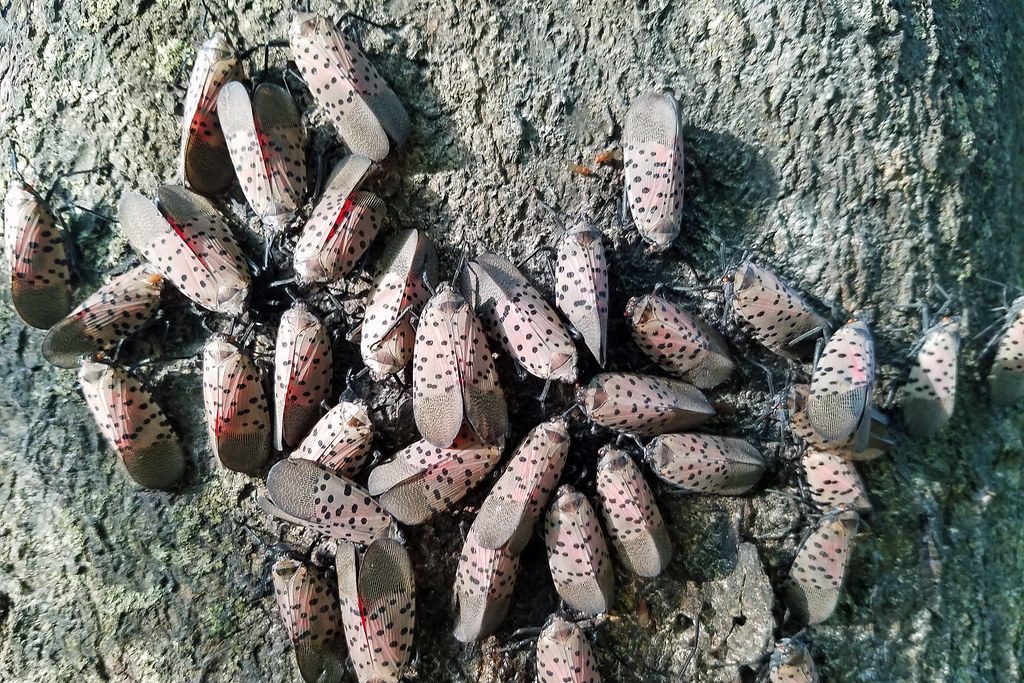Spotted Lanternfly in Easton PA, Bethlehem PA
The Spotted Lanternfly (SLF), Lycorma delicatula (White), is an invasive planthopper native to China, India, Vietnam. It was first discovered in Pennsylvania in Berks County and has spread to other counties in the southeast portion of the Commonwealth. This insect has the potential to greatly impact agricultural crops such as grapes, hops, and hardwoods. It is also reducing the quality of life for people living in heavily infested areas.
What else? Kill it! Squash it, smash it…just get rid of it. In the fall, these bugs will lay egg masses with 30-50 eggs each. These are called bad bugs for a reason, don’t let them take over your county next.
Background of the Spotted Lanterfly
- Spotted lanternfly (SLF) is an invasive species native to China, India, and Vietnam.
- In locations where it has become established, the Spotted Lanternfly has led to serious crop losses for fruit growers and has become a significant nuisance in residential landscapes.
- Initial infestation found in Berks County, Pennsylvania, in 2014. Thought to have arrived on a stone shipment in 2012.
- 14 counties in PA are under NYS quarantine and include Berks, Bucks, Carbon, Chester, Dauphin, Delaware, Lancaster, Lebanon, Lehigh, Monroe, Montgomery, Northampton, Philadelphia, and Schuylkill.
- Population(s) and NYS quarantine also in Delaware (New Castle), New Jersey (Hunterdon, Mercer, Warren Counties) and Virginia (Frederick County).
- One dead insect found in Delaware County, New York, in 2017.
- In New York (2018) SLF adults or egg masses were found in Albany, Chemung, Monroe, Suffolk, Westchester, and Yates Counties, as well as Brooklyn and Manhattan– all thought to be hitchhikers. No infestations reported at this time.
The Life Cycle of Spotted Lanternfly
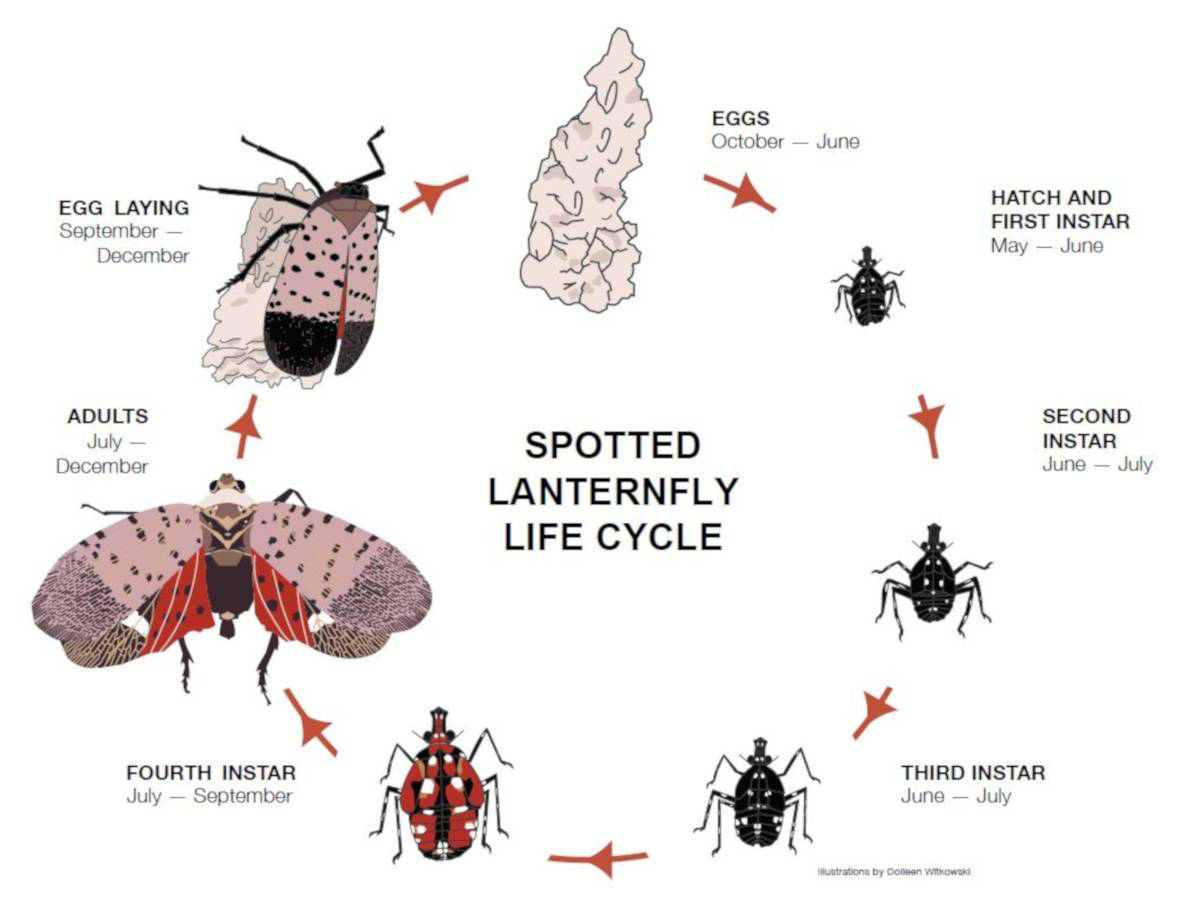
With the Spotted Lanternfly being found in Lehigh Valley, one of the most important things for controlling them will be identifying them. This is especially important since the nymph stages look so different than the adult stage. In fact, even the different nymph stages can look radically different from each other.
Spotted lanternflies go through their lifecycle within one year. Eggs hatch around May. The newly-hatched nymphs go through four stages, or instars, before reaching adult maturity in July. The nymphs are wingless and shaped like a stinkbug. In the first three instar stages, the nymphs are black with white spots. They change to red with black spots in their fourth instar stage. Once reaching adulthood, they will mate and begin to lay eggs in late summer. They may continue laying eggs through November. The eggs, which are tan and seed-like, are covered in a muddy-looking secretion, forming a brown mass on trees, furniture, stones and other inanimate object. The eggs remain through the winter and will hatch the following spring. Adults do not survive the winter.
How to Avoid Spreading the Spotted Lanternfly in PA and Beyond
The Pennsylvania Department of Agriculture recommends the following if you find a spotted lanternfly on your property, located outside the quarantined area.
Egg masses. If you find egg masses, scrape them off, double bag them and throw them away after placing the eggs into alcohol or hand sanitizer to kill them. Then follow up by reporting all destroyed egg masses on the Pennsylvania Department of Agriculture website.
Collect a specimen. Specimens of any life stage can be turned in to the Pennsylvania Department of Agriculture’s Entomology lab for verification by submitting samples with the Entomology Program Sample Submission Form.
Submit a picture. A picture of any life stage (including egg masses) can be submitted to Badbug@pa.gov.
Report a site. If you can’t take a specimen or photograph, call the Automated Invasive Species Report Line at 1-866-253-7189 and leave a message detailing your sighting and contact information.
If you find a spotted lanternfly within the quarantine area, you should try to kill it.
Sunlight Water & Us is working closely with state authorities to prevent the spread of Spotted Lanternfly in the Easton PA, Allentown PA, Lehigh Valley PA and surrounding areas. Our expert staff can help you with any aspect of Spotted Lanternfly control, including identification, inspection and monitoring services, systemic treatments, and/or removal of unwanted stands of tree-of-heaven. Below are just a few services we can offer you:
Merit Injection (March – April): Insects will die if they eat any part of the treated trees and shrubs.
Spotted Lanternfly Inspections (July – September): We will inspect the trees and shrubs for insects 3 times; once in July, once in August and once in September. We will treat with a surface insecticide if needed.
Egg Inspection (October): We will inspect all the trees and shrubs for egg sacks. If sacks are present, we will remove by scraping the eggs off the trees and shrubs that we can reach from the ground.
Let us Help!!
Please fill out the simple form below or call us (610) 438-3792 to let the experts at Sunlight Water & Us rid your trees and shrubs of the Spotted Lanternfly.

